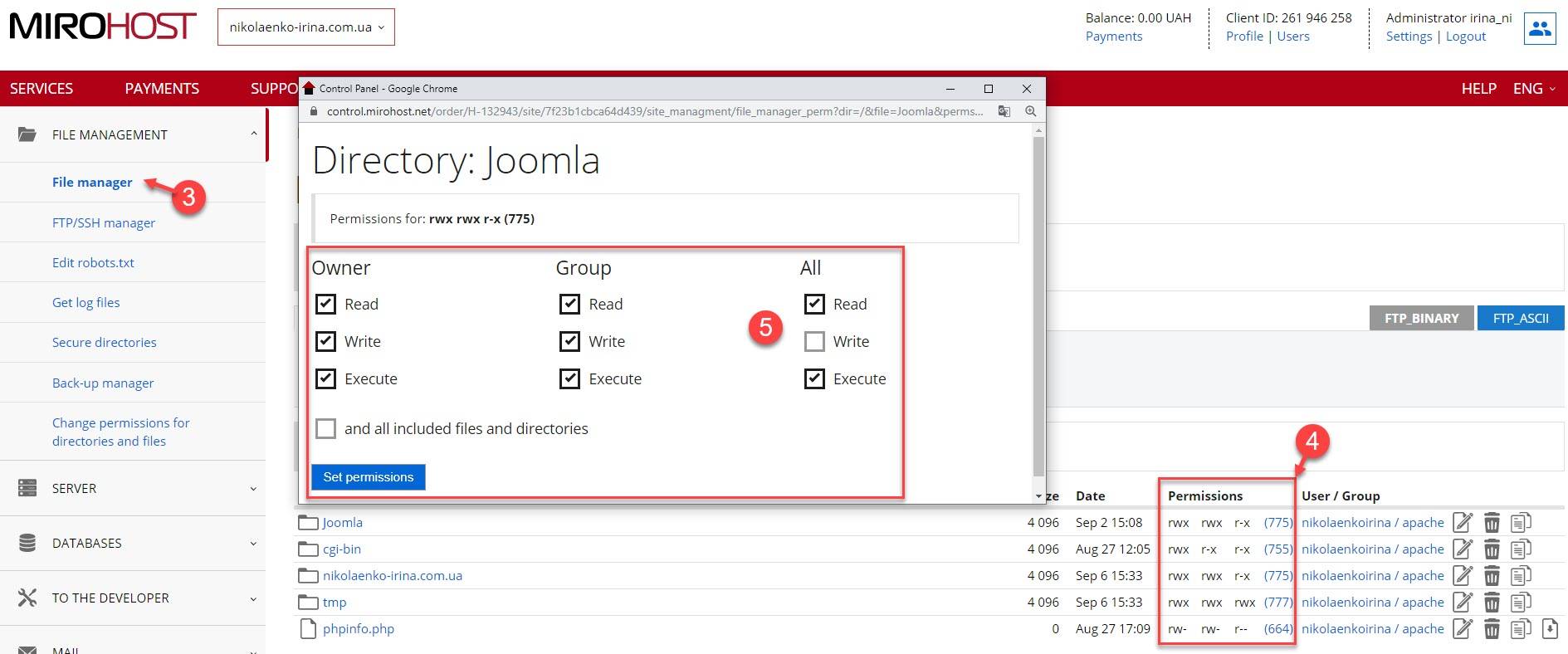Rights of files and directories
Each file and directory kept on UNIX server has a number of rights that allow some number of actions with these files and directories. Every file and folder has ‘the owner’ and ‘the group’ connected with it. If you create a file, in most cases the owner is you and your group, or the group connected with folder where the file is located.
File access rights:
- r — right for reading
- w — right for content changing
- x — right for file execution
Directories access rights:
- r — right for reading
- w — right for content changing
- x — right for entering
Rights management in the Mirohost control panel
-
Step 2. Go to Domains management and select the domain you need
-
Step 3. Go to ‘File manager’ (‘File management’ → ‘File manager’)
-
Step 4. Go to ‘Permissions’ column opposite the directory or file you need.

Access rights to files and folders: list of codes
400 — owner has the right to read, others have no rights;
644 — owner can read and edit, group and others — can read;
660 - owner and group can read and edit, others - no rights;
664 - owner and group can read and edit, others - read only;
666 — owner, group and others can read and edit;
700 - the owner can read, edit, execute, all the rest - no rights;
744 — owner can read, edit, execute, group and others — read only;
755 - the owner has the right to any operations, group and others - only read and execute;
777 - everyone can perform any operations (full access to everything for everyone);
File Permissions (chmod) are rules that regulate the order and conditions of access to files and directories located in the operating system on a computer or server. Permissions are applied for security purposes to differentiate users within the system, defining privileges for reading, writing, and executing operations.
-
The first right is the right to read, denoted by the symbol "r" or the number "4" in the bit mask. This allows users to view the contents of files using text editors or to browse directories.
-
The second right is the right to write, denoted by the symbol "w" or the number "2" in the bit mask. This right grants the ability to edit files, make changes to them, as well as create and delete files in directories.
-
The third right is the right to execute, denoted by the symbol "x" or the number "1" in the bit mask. With this right, users can run executable files, which may contain programs, or traverse into directories. If a user does not have the read right in a directory, they won't be able to see the list of files in it.
In this way, the combination of these rights precisely determines what actions different users can perform on files and directories, ensuring effective and secure access to data.
